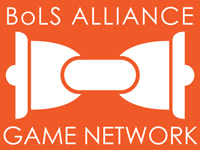 Apocalypse is one of my favorite 40K variants. Big models, large strategies and hordes of miniatures on the table is a real inspiration to come up with a story behind it all. It's even better that it's the sort of game type that begs to be played with more than just two people. The days around the table throwing dice with a good group of friends are the days that I fondly remember.
Apocalypse is one of my favorite 40K variants. Big models, large strategies and hordes of miniatures on the table is a real inspiration to come up with a story behind it all. It's even better that it's the sort of game type that begs to be played with more than just two people. The days around the table throwing dice with a good group of friends are the days that I fondly remember.Setting up a game of Apocalypse can take work, though. It's not difficult, but it does involve a bit more than just agreeing with you and another buddy on whether or not to carpool. I've put a few of these together and I have a little checklist that I like to run through. Most of the stuff on the list is just little reminders to people to have things ready before getting to the table. That way everyone can start playing as soon as possible.
Things each player needs to bring:
- Army - No shock here. Bring your minis. Also make sure you have your army list and also make sure everything is WYSIWYG. There's a lot of stuff happening on an apocalypse table and nobody wants to need to remember that gretchin over there is actually Gazhgull.
- Tape Measure & Dice - Everyone needs to have their own so that everyone can be moving and shooting simultaneously. This includes the scatter dice.
- Codex & DataSheets - Everyone should have their own copy of their army rules and the rules of any special apoc formations they are using.
- Cash - This is optional, but if you think you're going to want to buy a snack from the game store or nearby grocery make sure you have a way to pay for it on your own. Don't be a mooch.
- Templates - Just like the tape measure. Bring your copy of the templates and make sure yours are marked somehow so that at the end of the day you know which templates to take home. Also, if you have a weapon or asset that uses one of the special apocalypse sized templates then make sure you've got that template with you.
This each team needs to bring:
- Deployment time bid - Each team should have pointed up
their armies and discussed their strategy beforehand so they should know how much time they are going to bid for deployment. Knowing this beforehand saves time and gets everyone into the game faster.
- Apocalypse Assets - Again, since armies and general strategies should already be known everyone should have also picked their strategic assets. Remember that you can only have one of each asset per side so discuss with your teammates what you are going to take. Also bring anything that you need for your asset. If you're going to bring BUNKERS or OBSTACLES then you should make sure you have bunker and obstacle models.
- Team Leader - Someone should be appointed team leader. This is the "final answer" guy. They're in charge of writing down the deployment bid, final placement of objectives and giving the final OK for ending a turn or phase. This isn't as much a position of power as it is a method to avoid having to rewind time because someone wasn't paying attention and forgot to move their dreadnought.
Finally, as the organizer, there are a few things that you should do and bring to the game.
- Email Notice - Send out a group email. This email should be to all interested parties and contain who's on what team, what the points limit for each side is going to be, where the game is going to take place, what time it's going to start, if/when you'll be breaking for food and what time the game e
nds. This last one is important, because whatever time you want the game to end, make sure you specify a half hour to an hour before that time to announce that the current turn is the last turn. Your email should also have any special rules or restrictions spelled out. Only one formation per person? Using night fighting rules on turn 1? It's a real buzz-kill to have a special rule sprung on you right before the game starts that you feel makes the strategy and army list you worked on for a week useless. Make sure everyone knows what's going on so that no one feels cheated.
- Read the Book - At least read the section detailing the pre-game steps. The apocalypse book lays things out really well and if you just go down the list of things to do you'll be rolling dice in no time.
- Supplies - Camera for taking pictures. String and masking tape for setting up no-man's land. If you're going to time turns then bring along a timer. It's also a good idea to bring along an extra tape measure and set of templates to help move things along.
I've had a lot of fun in my Apocalypse games. I've played them with as many as six people and as few as just me and a buddy bashing our titans and marines against each other. Remember that the most important rule is to have fun and that a little bit of organization can make for a bit less chaos and a lot more fun.







